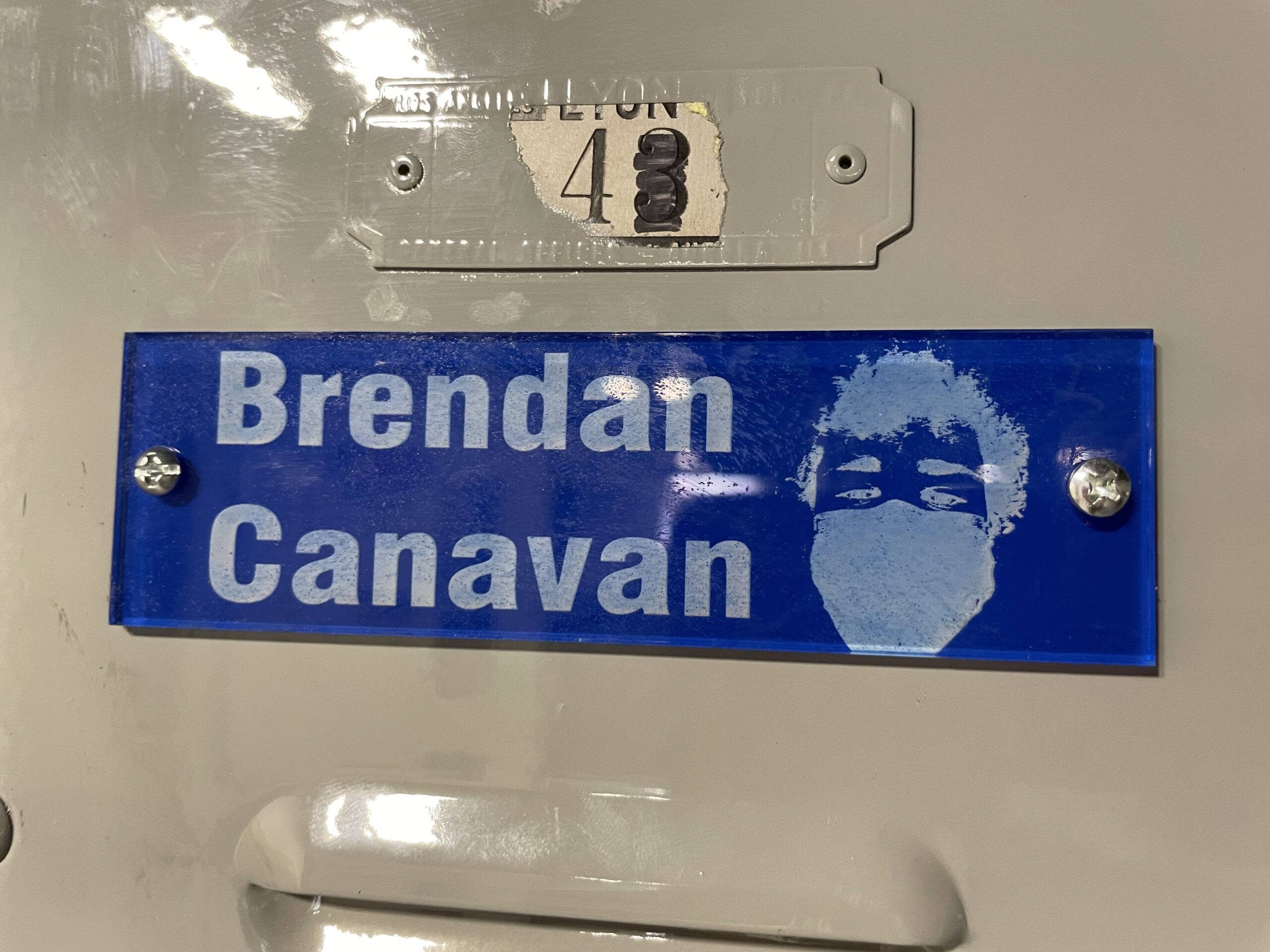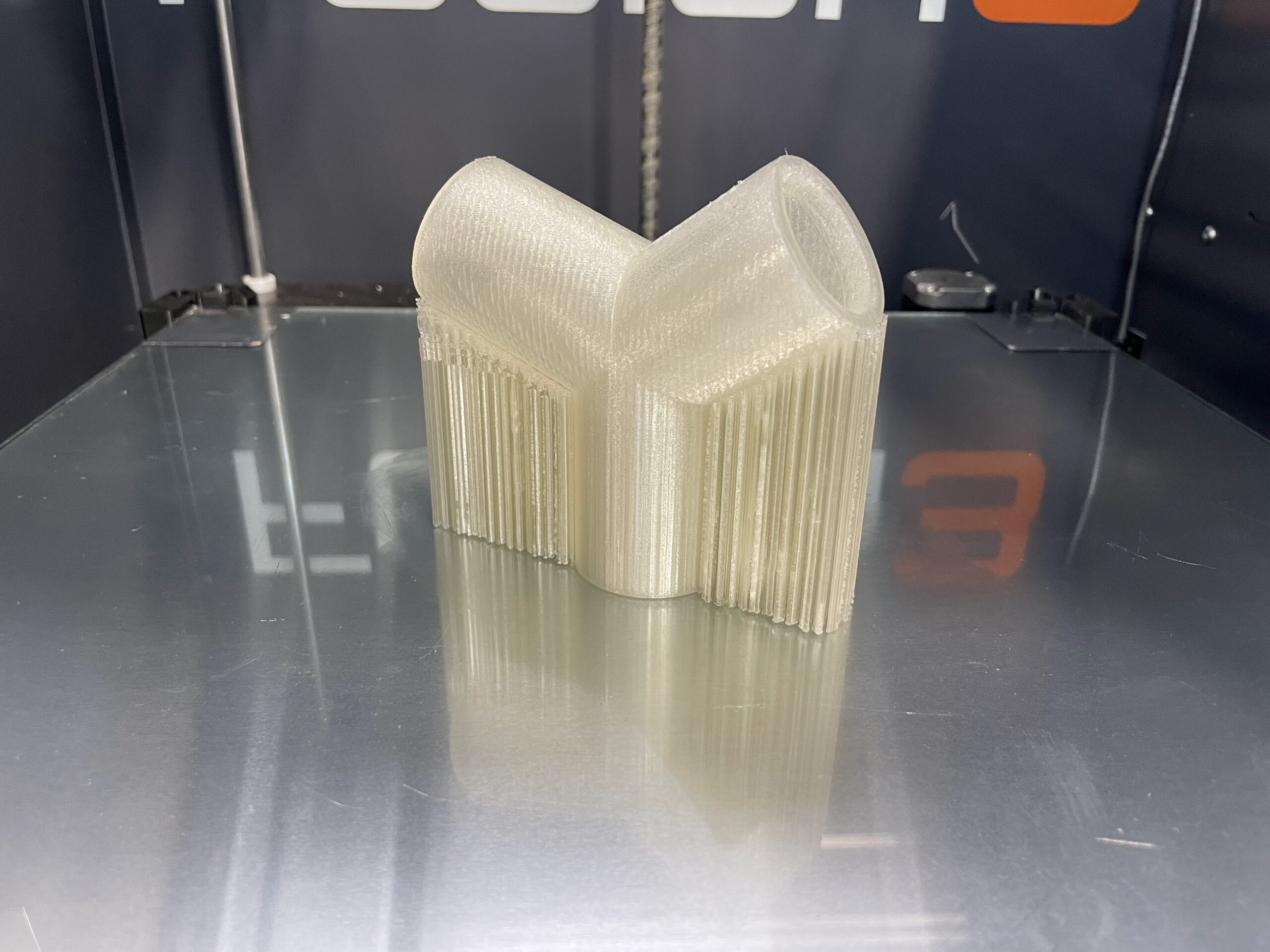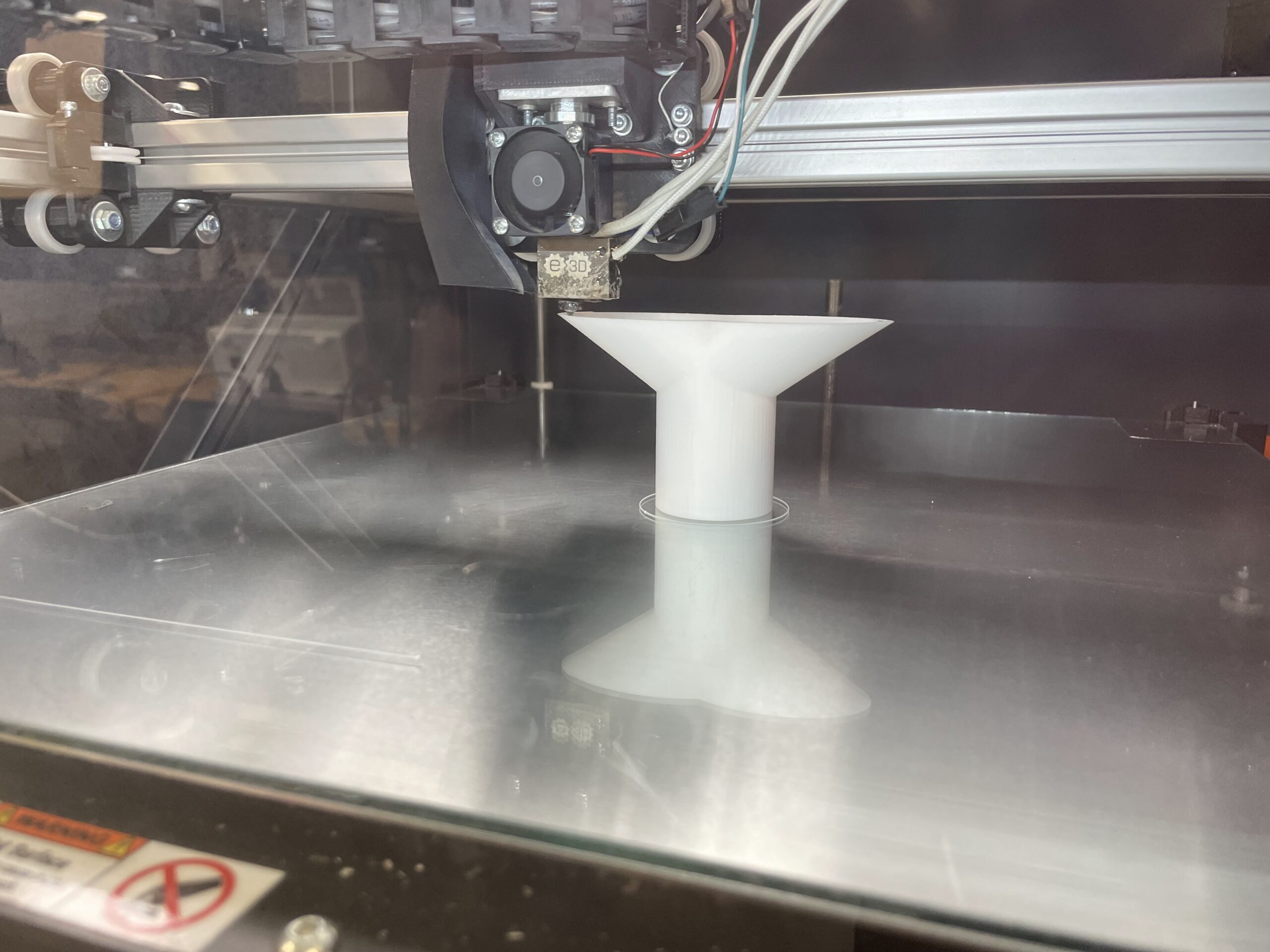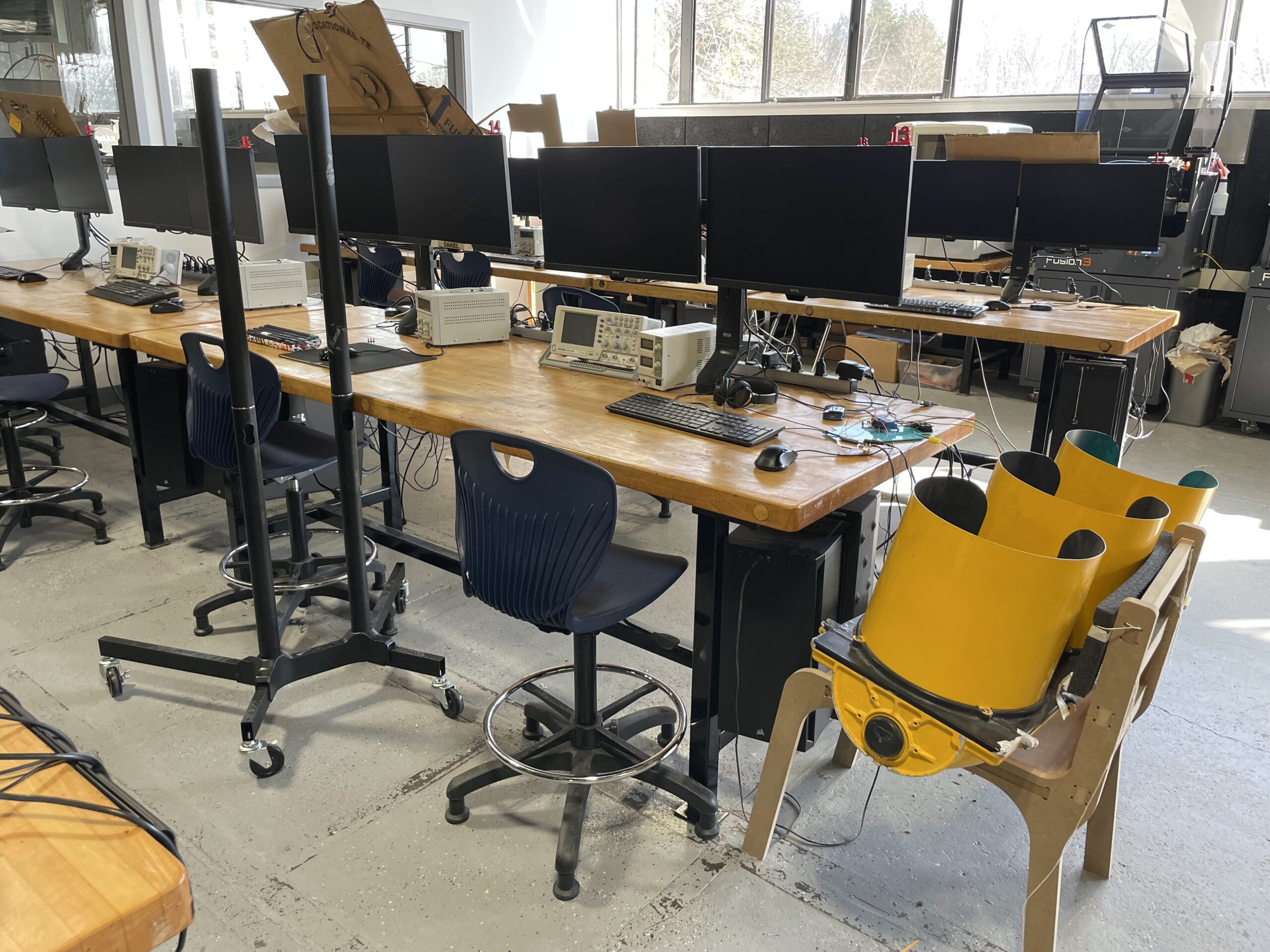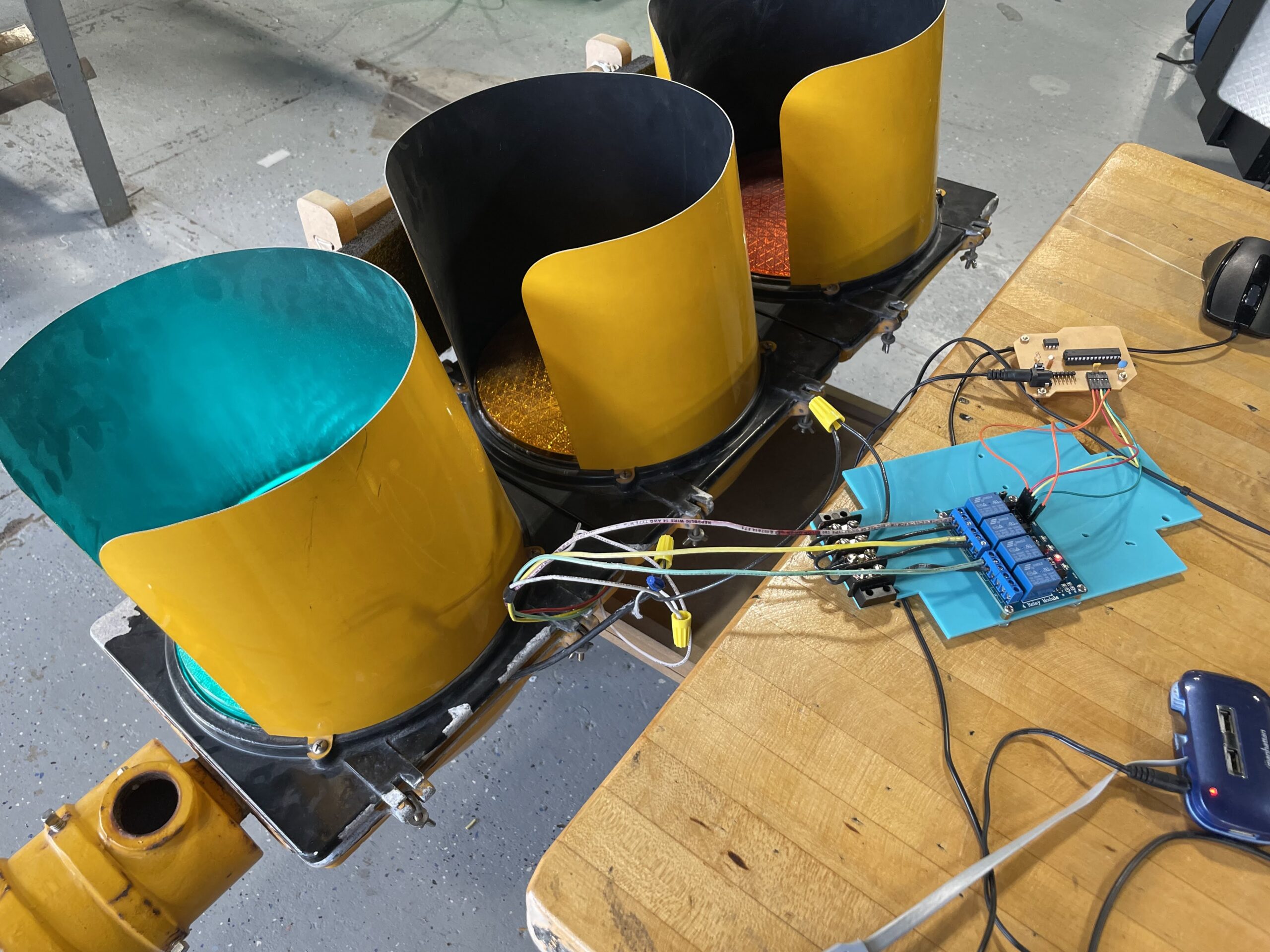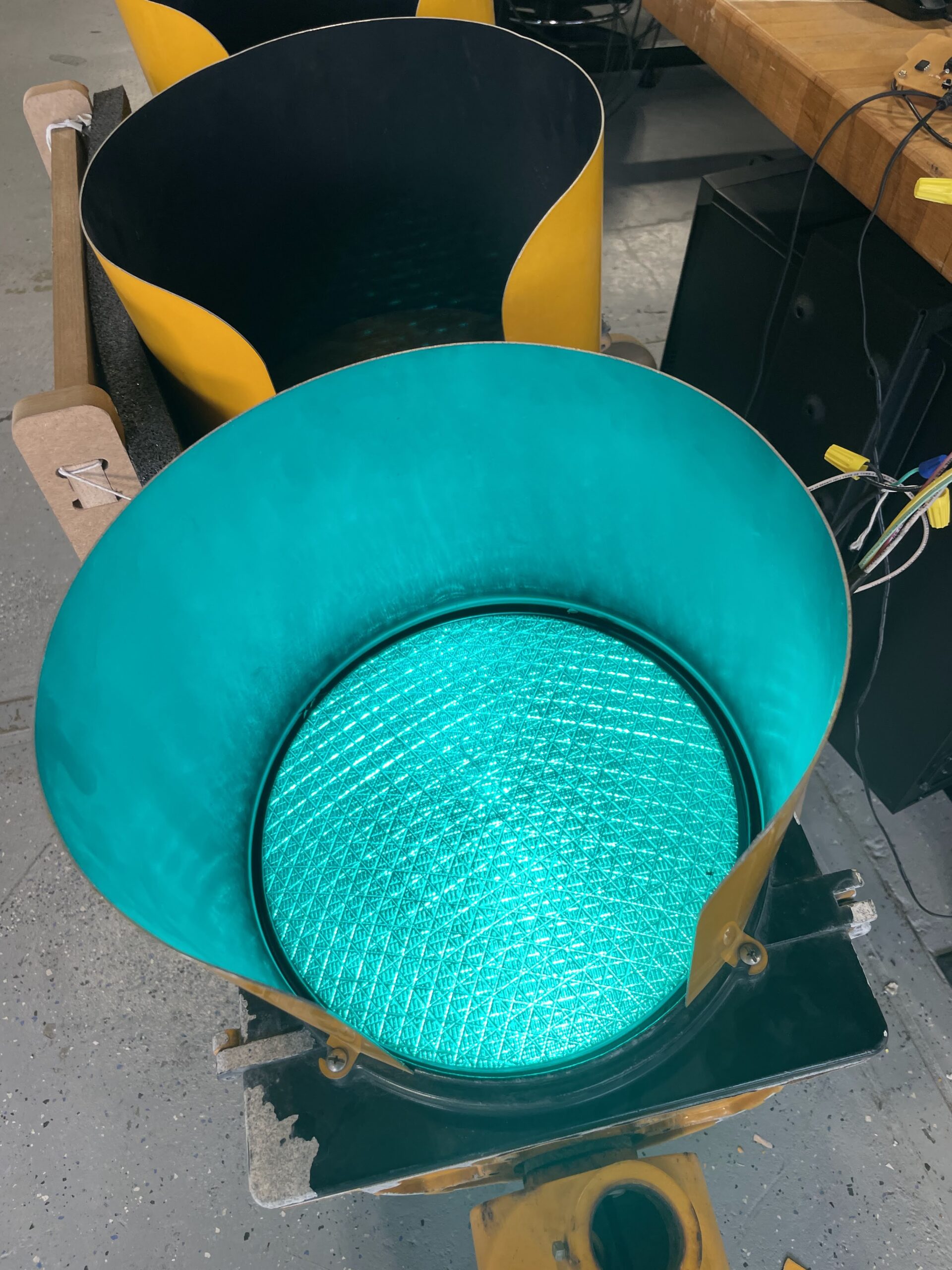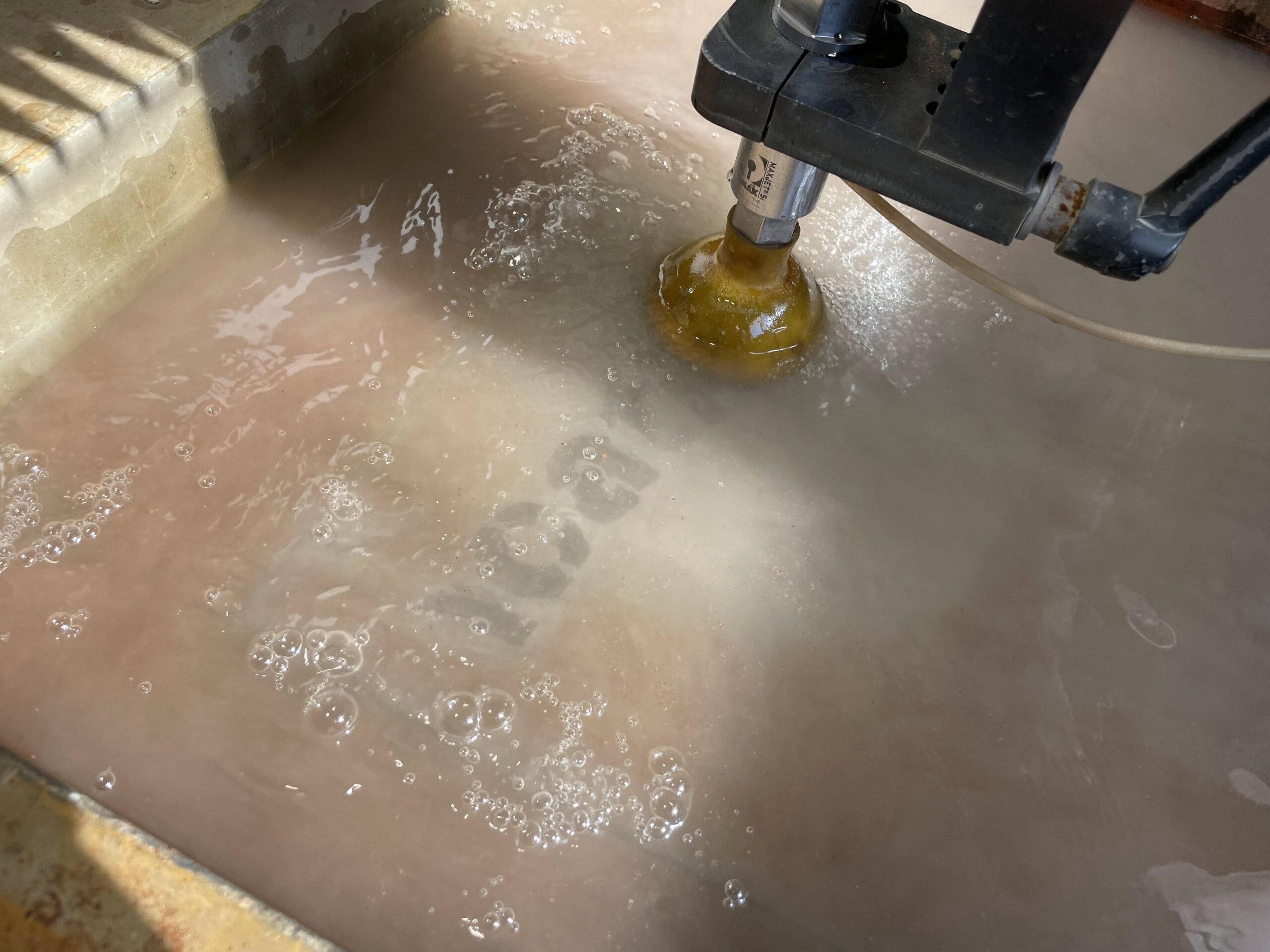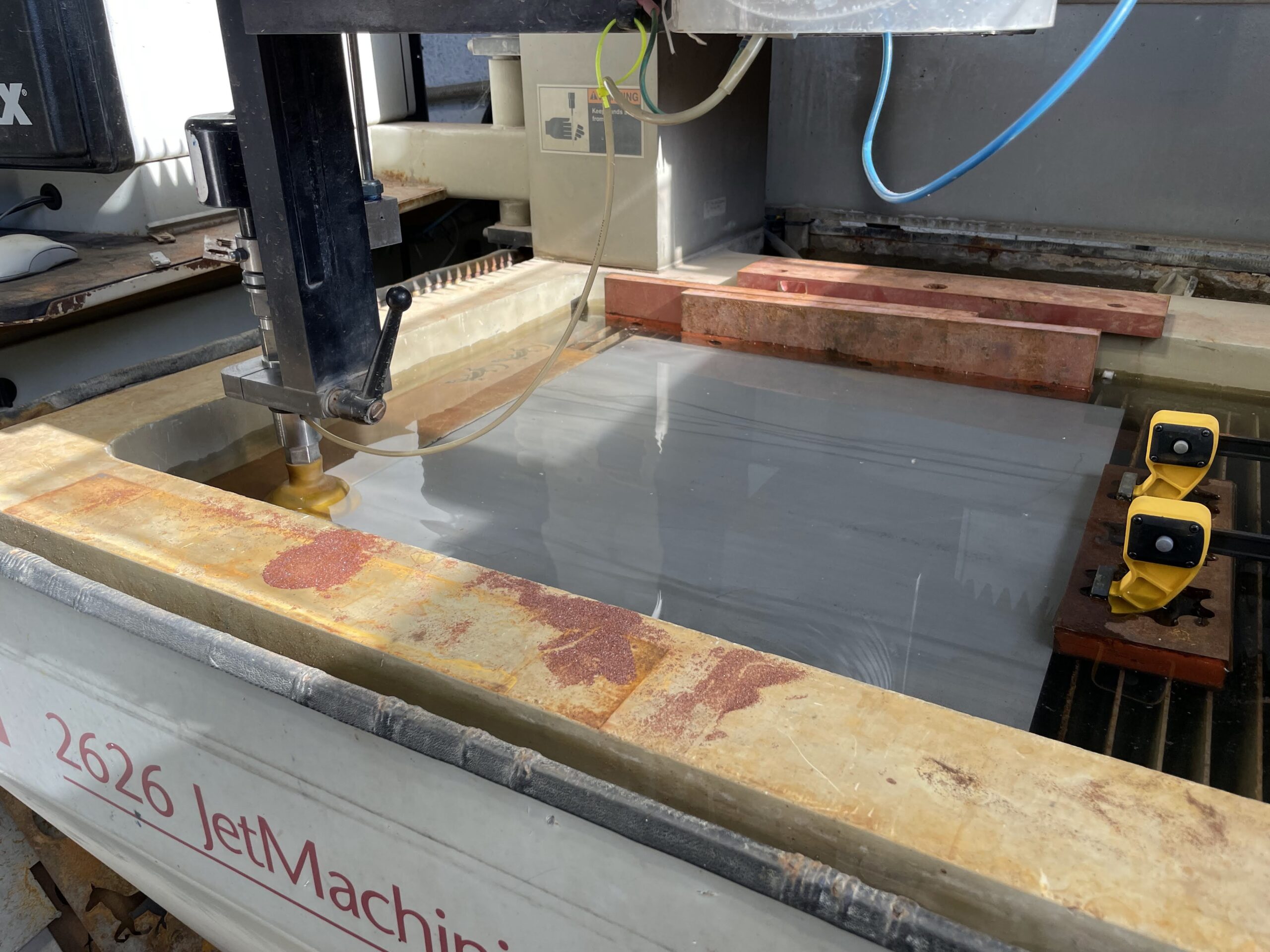A few times this week I’ve noticed in the morning that the lighting in my shop is behaving a bit strange. The system is a ‘smart’ lighting platform that recognizes movement within a room. It will automatically turn on the lights when movement is sensed, and then turn the lights out after a set time if no movement is sensed. Usually when I arrive at work the lights turn on automatically, and then after a while of working at my desk they turn off. I then get up and walk a few steps to get them back on again. This morning, I got up from my desk to get the lights back on and then started turning off and on again at random. It was very strange. It lasted for about 30 seconds and then everything was normal again. I’ve put a short video of it below.
In other news, our students have finally decided it was time to create some more permanent name tags for their lockers in the shop. After a few different iterations, they settled on making acrylic nametags. They spray paint the back of clear acrylic whatever color they want, then engrave their names in reverse on the acrylic. It creates a really nice finish. They are measuring and drilling holes into the lockers today, and will probably spend some time next week finishing the job. Each student is responsible for making their own locker tag. Below is an example.
